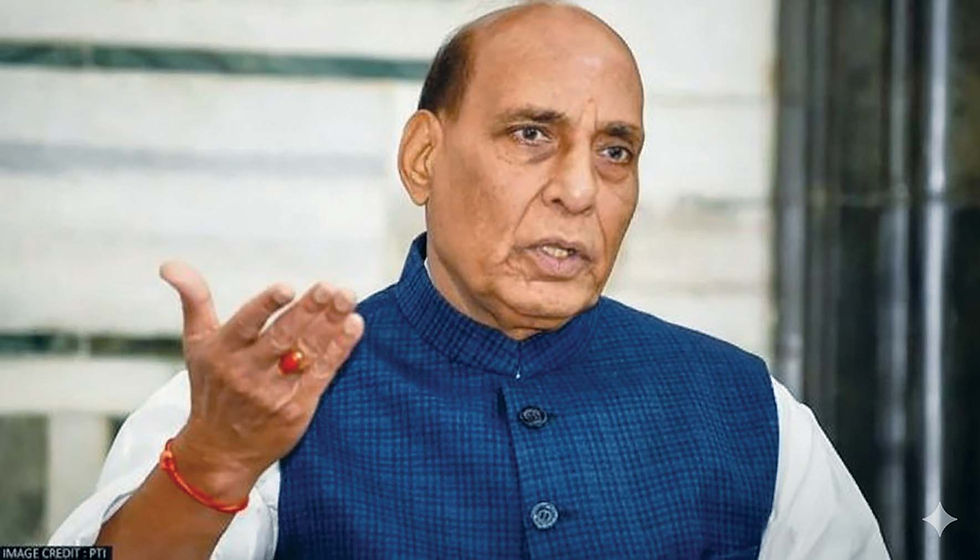Whirring Blades, Warring Neighbours
- Commodore S.L. Deshmukh

- Aug 11
- 4 min read
India’s Apaches and Pakistan’s Z-10MEs are signposts in an accelerating South Asian arms race.

In South Asia, where the map is still defined by old wars and the memories of near ones, the induction of attack helicopters is a declaration of intent that is impossible to ignore.
Purpose-built to destroy tanks, smash fortifications and shield advancing troops, these machines are the shock cavalry of the modern age. They are like predators from the drawing board onwards: gunships with teeth in the form of machine guns, autocannons, rockets and guided missiles. And in the last decade, they have become a centrepiece of the India–Pakistan military equation.
India’s choice is the AH-64E Apache Guardian, the latest and most advanced variant of America’s most battle-tested attack helicopter. The Apache’s combat record stretches from Iraq to Afghanistan, and its very silhouette signals lethality. It carries a 30mm chain gun capable of tearing through infantry and light armour, Hellfire missiles for dispatching tanks at a distance and Hydra rockets for suppressing wide areas. For self-defence, it can be armed with air-to-air missiles, because in a contested battlespace, even the hunter can become prey.
What makes the Apache truly dangerous, however, is its brain. The Longbow radar can detect, classify, and prioritise targets while the helicopter hides behind terrain. Modern infrared and night-vision systems allow it to fight in darkness and foul weather. Its data links enable it to pass target information to tanks, infantry or drones in real time and uniquely take control of UAVs directly, extending its reach and awareness far beyond its own line of sight.
Pakistan’s choice is the Chinese-built Z-10ME, a machine once dismissed as underpowered but now heavily upgraded. With new engines delivering 30 percent more output, it can operate in the thin air of the Hindu Kush and Siachen - terrains that were once its Achilles heel. It carries an arsenal designed to match or at least threaten the Apache: AKD-10 anti-tank missiles, CM-502AG air-to-ground missiles, TY-90 air-to-air missiles, and a 23mm autocannon. It is compatible with loitering munitions and UAVs, signalling China’s own move toward integrated battlefield systems. Ceramic composite armour, electronic warfare suites, and infrared suppressors give it a fighting chance in the same hostile environments where the Apache thrives.
That Pakistan now flies the Z-10ME is a story in itself. This is a country that once fielded American Cobras, machines that served for decades but are now hopelessly outdated. Islamabad had previously turned down Chinese offers of the Z-10, citing performance concerns. The decision to induct the upgraded ME variant shows both how far the design has come and how far Pakistan has moved into China’s military orbit. It is also an admission that access to American platforms is, for now, politically impossible.
The two machines are not equal. The Apache’s systems, survivability, and combat record give it the edge. But war is rarely a technical spreadsheet exercise. The Z-10ME’s induction is enough to complicate India’s planning, just as the Apache’s presence forces Pakistan to adapt its doctrine.
This matters because South Asia is not a region where such capabilities gather dust. The 1965 and 1971 wars saw some of the largest tank battles since the Second World War. The Kargil conflict of 1999, though fought largely in the mountains, underscored the need for precision firepower close to the line of control. In such a theatre, the attack helicopter is not a museum piece; it is a plausible first responder in any flare-up.
The danger is that their very existence may encourage their use. They are tactical assets, not strategic ones, and therefore fall into the category of ‘use it or lose it’ in a shooting war. If skirmishes escalate, the temptation to deploy them early to break a stalemate or exact retribution will be high. And once in the fight, they are hard to disengage.
There is also the matter of signalling. Helicopter deployments can be highly visible, whether in forward bases, at joint exercises, or on patrol near contested borders. In a region where the political temperature can spike overnight, such visibility risks being read as preparation for aggression. That misreading, in turn, can feed the spiral of escalation that South Asia knows too well.
India will, for now, retain qualitative superiority, not just in helicopters but across its air and ground forces. Its defence budget is larger, its supplier base more diversified, and its military-industrial ecosystem more developed. But Pakistan’s acquisition of the Z-10ME demonstrates that parity is not the goal; deterrence is. In this sense, every Apache India buys is an argument for Pakistan to seek a counterweight, and every Z-10ME Pakistan inducts is a reason for India to upgrade further.
This is the logic of the slow-burn arms race. It does not require either side to believe war is imminent. It requires only the belief that, should war come, the other side must not be allowed to hold a decisive advantage. That belief is alive and well on both sides of the Radcliffe Line.
The Chinese philosopher Lao Tzu cautioned that “there is no greater danger than underestimating your opponent.” In South Asia’s skies, the corollary holds true: overestimating one’s own invulnerability can be just as fatal. The Apache and the Z-10ME are machines built to fight. Whether they become machines that fight each other depends on the restraint of the people who command them.
(The writer is a retired naval aviation officer and defence and geopolitical analyst. Views personal.)





Comments